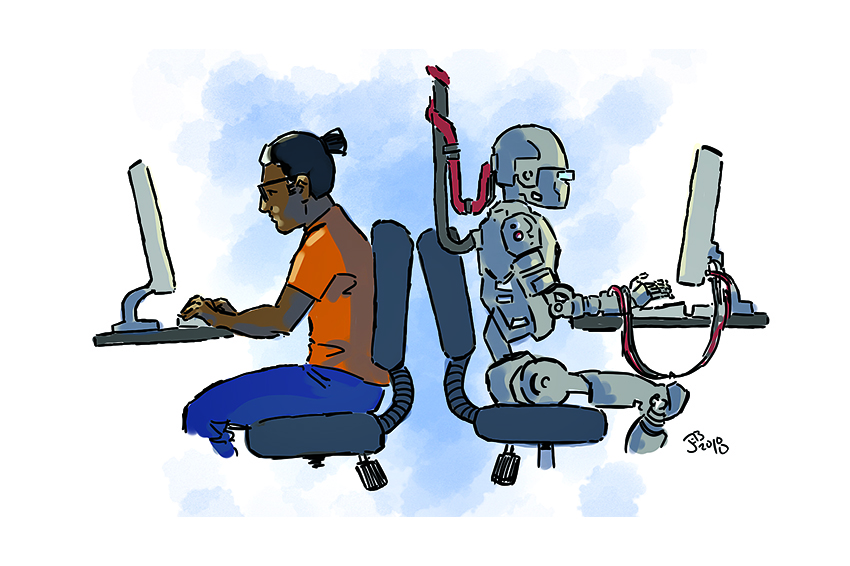While use of conversational bots in journalism is fairly new, building these bots has never been easier, as demonstrated by an online course through UT’s Knight Center.
The Knight Center for Journalism in the Americas specializes in providing resources at low- or zero-cost to journalists in Latin America, as well as all over the world. The center is currently offering a free online course called Building Bots for Journalism, which demonstrates how to make conversational bots through the platform Dexter.
The course is taught by John Keefe, a bot developer at the digital news outlet Quartz. Previously, Keefe served as senior editor of data news at the public radio station WNYC, where he worked for 16 years.
As part of his work at the Quartz Bot Studio, Keefe has explored conversational interfaces, or software that audiences can talk with. Through this process, Keefe and his colleagues have learned how to build conversational bots that can provide information, tell stories and interact with people.
“The Knight Center reached out to me to see if I would be willing to share some of that knowledge and that led to this course,” Keefe said.
The course utilizes the bot-writing platform Dexter and the scripting language RiveScript to communicate using natural language. Keefe likened coding in this platform to writing a screenplay with two actors: the human and the bot. Developers write dialogue for the bot by predicting what the human will say.
Keefe will also teach students how to connect their bot with services such as text messaging, Amazon Alexa or Facebook Messenger. Since students in the class come from many different backgrounds and countries, the use of multiple interfaces gives them the flexibility to adapt bots to their specific function or geographic location.
“Maybe in your part of the world it makes more sense to make a (text messaging) bot,” Keefe said. “Or in your part of the world, with the audience, it may make more sense to hook it up to Facebook Messenger.”
Hitender Rao, student in the course and reporter for the Hindustan Times in India, said he is taking the course in the hopes that it will open new doors for him. He said he wishes to eventually develop bots to counter fake news.
Hector Rodriguez Cano, another student in the course and journalist from Madrid, said he also had a positive experience with the course.
“Just in the second week I’m finding (it) fascinating how much we can achieve in conversational bots, most of all because of all the resources the teacher is showing us,” Cano said.
Mallary Tenore, assistant director of the Knight Center, said she considers conversational bots to be an emerging trend in journalism at the moment. While bots are still a niche topic, she thinks the situation is similar to how Twitter was new and unfamiliar to journalists a decade ago but has since caught on.
“We (at the Knight Center) really believe that bots, artificial intelligence and machine learning will define the next couple of decades in journalism,” she said.
Building Bots for Journalism is currently ongoing and ends on March 11.





















